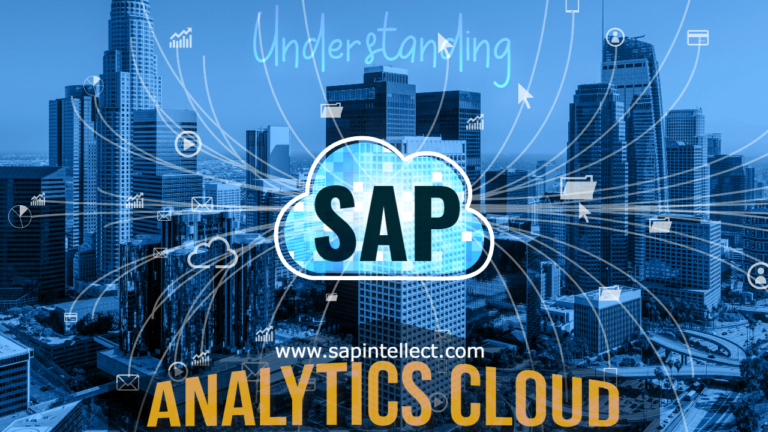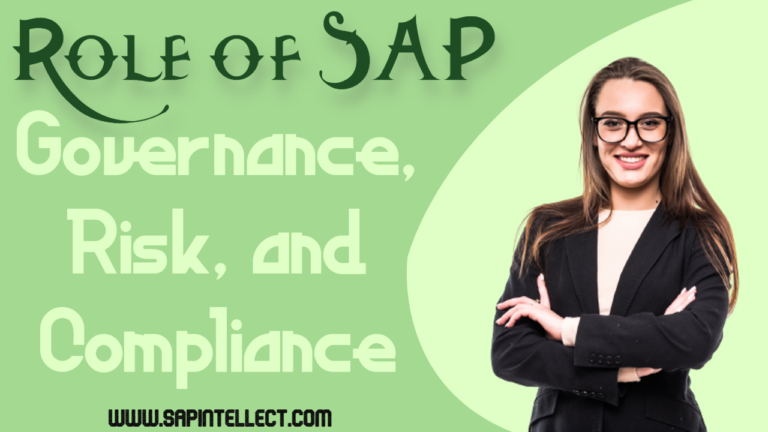A Comprehensive Guide to SAP Supplier Relationship Management (SRM)
In today’s dynamic business environment, organizations face the challenge of managing their supplier relationships efficiently while optimizing costs and ensuring the highest quality of products and services. SAP Supplier Relationship Management (SRM) emerges as a powerful solution to tackle these challenges. In this comprehensive guide, we will delve deep into the world of SAP SRM, exploring its key features, benefits, implementation best practices, and its role in driving business success.
Chapter 1: Understanding SAP Supplier Relationship Management (SRM)
1.1 What is SAP SRM?
SAP Supplier Relationship Management, commonly referred to as SAP SRM, is a strategic procurement solution designed to streamline and enhance supplier collaboration, procurement processes, and supplier performance management. It provides organizations with a unified platform to manage their supplier relationships efficiently, reduce costs, and mitigate supply chain risks.
1.2 The Evolution of Supplier Relationship Management
To grasp the significance of SAP SRM, it’s essential to understand the evolution of supplier relationship management. Historically, supplier management was primarily focused on cost reduction and negotiation. However, modern SRM goes beyond cost savings and emphasizes building mutually beneficial, long-term relationships with suppliers.
Chapter 2: Key Features of SAP SRM
2.1 Supplier Collaboration
SAP SRM offers a collaborative platform that enables real-time communication and collaboration between buyers and suppliers. This fosters transparency and facilitates the exchange of critical information, such as purchase orders, invoices, and delivery schedules.
2.2 Procurement Automation
One of the core functionalities of SAP SRM is the automation of procurement processes. It simplifies and accelerates tasks such as requisitioning, sourcing, and purchase order creation. Automation reduces manual errors, enhances efficiency, and allows procurement professionals to focus on strategic activities.
2.3 Supplier Performance Management
Effective supplier performance management is crucial for organizations aiming to maintain high product and service quality. SAP SRM provides tools for evaluating supplier performance, tracking key performance indicators (KPIs), and identifying areas for improvement.
2.4 Contract Management
Contract management is another critical aspect of supplier relationship management. SAP SRM centralizes contract data, ensuring compliance with negotiated terms and conditions. This feature helps in reducing contract leakage and optimizing contract utilization.
2.5 Spend Analysis
Understanding and optimizing spending patterns is essential for cost reduction. SAP SRM includes spend analysis tools that provide insights into an organization’s spending behavior, helping identify opportunities for cost savings and supplier consolidation.
Chapter 3: Benefits of Implementing SAP SRM
3.1 Cost Reduction
One of the most immediate benefits of SAP SRM is cost reduction. By streamlining procurement processes, automating repetitive tasks, and optimizing supplier relationships, organizations can significantly cut their operational costs.
3.2 Enhanced Supplier Collaboration
Efficient communication and collaboration with suppliers lead to improved relationships. SAP SRM facilitates transparency and fosters trust between buyers and suppliers, resulting in better collaboration and potential cost savings through joint initiatives.
3.3 Risk Mitigation
Supply chain disruptions can have a severe impact on business operations. SAP SRM provides tools to assess and mitigate risks by identifying alternative suppliers, monitoring supplier performance, and ensuring compliance with regulatory requirements.
3.4 Improved Supplier Performance
Effective supplier performance management ensures that suppliers meet their commitments regarding quality, delivery times, and pricing. SAP SRM’s performance evaluation tools enable organizations to work with their suppliers to enhance performance continually.
3.5 Strategic Sourcing
SAP SRM supports strategic sourcing by providing valuable insights into supplier capabilities and market trends. This enables organizations to make informed decisions when selecting suppliers and negotiating contracts.
Chapter 4: Implementing SAP SRM
4.1 Planning and Preparation
The successful implementation of SAP SRM starts with careful planning and preparation. This phase involves defining objectives, assembling a dedicated project team, and conducting a thorough analysis of the existing procurement processes.
4.2 System Configuration
Configuration involves tailoring SAP SRM to meet the specific needs of the organization. This step includes defining approval workflows, setting up procurement rules, and integrating with other SAP modules or external systems.
4.3 Data Migration
Migrating existing procurement data into SAP SRM is a critical step. Clean and accurate data ensures a smooth transition and minimizes disruptions in procurement operations.
4.4 Training and Change Management
User adoption is vital for the success of SAP SRM. Adequate training and change management programs should be in place to ensure that employees can effectively use the system and adapt to new processes.
4.5 Testing and Quality Assurance
Thorough testing is crucial to identify and rectify any issues or bugs in the system before it goes live. This phase ensures that SAP SRM operates smoothly and meets the organization’s requirements.
Chapter 5: Real-World Examples of SAP SRM Success
5.1 Case Study 1: Global Manufacturing Company
A global manufacturing company implemented SAP SRM to centralize procurement processes and improve supplier collaboration. Within six months of implementation, the company reduced procurement cycle times by 30% and achieved a 15% reduction in procurement costs through better negotiation and supplier performance management.
5.2 Case Study 2: Retail Giant
A large retail corporation leveraged SAP SRM to gain better control over its supplier base and optimize spend. By analyzing spending patterns and consolidating suppliers, the company reduced its supplier count by 20%, resulting in an annual cost savings of $10 million.
Chapter 6: Challenges and Considerations
6.1 Integration with Existing Systems
Integrating SAP SRM with existing ERP systems and other software can be complex. Organizations must carefully plan integration strategies to ensure data consistency and seamless information flow.
6.2 Change Management
Resistance to change is a common challenge in implementing SAP SRM. Effective change management strategies, including communication and training, are essential to overcome this resistance.
6.3 Data Quality
Data quality issues can hamper the success of SAP SRM. Organizations must invest in data cleansing and maintenance to ensure accurate and reliable information.
Chapter 7: The Future of SAP SRM
7.1 Artificial Intelligence and Machine Learning
The future of SAP SRM lies in harnessing artificial intelligence and machine learning. These technologies can provide predictive analytics, supplier risk assessment, and even autonomous procurement decision-making.
7.2 Enhanced Supplier Collaboration
As global supply chains become more complex, the need for enhanced supplier collaboration will continue to grow. SAP SRM is expected to evolve to accommodate more advanced collaboration tools and capabilities.
7.3 Sustainability and Ethical Sourcing
Organizations are increasingly focused on sustainability and ethical sourcing. SAP SRM may incorporate features that help organizations track and manage their supplier’s environmental and social impact.
Conclusion
SAP Supplier Relationship Management (SRM) is a powerful tool that can transform the way organizations manage their supplier relationships and procurement processes. By leveraging its key features, such as supplier collaboration, procurement automation, and spend analysis, businesses can unlock significant benefits, including cost reduction, enhanced supplier performance, and risk mitigation.
Implementing SAP SRM requires careful planning, data migration, and change management. Real-world examples demonstrate that the successful adoption of SAP SRM can lead to substantial cost savings and operational improvements.
As SAP SRM continues to evolve, with advancements in AI, machine learning, and sustainability features, it remains a vital solution for organizations aiming to thrive in an increasingly competitive and complex business landscape. By embracing SAP SRM, businesses can build stronger supplier relationships, reduce costs, and drive long-term success.







